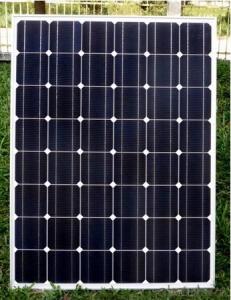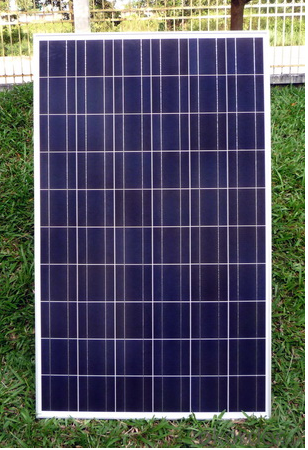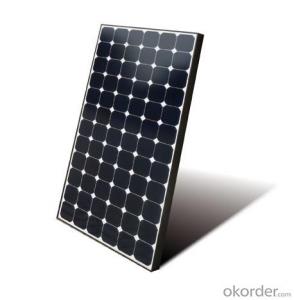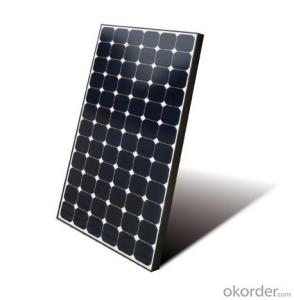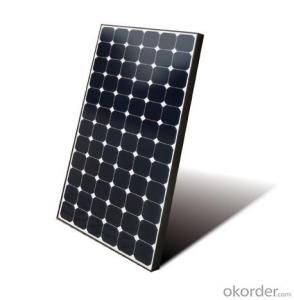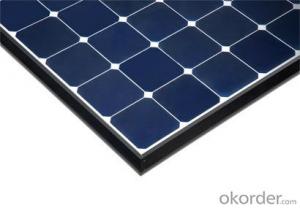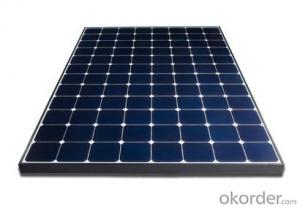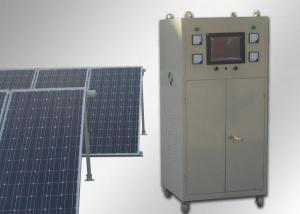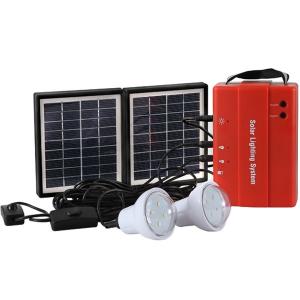Skagit Solar Energy Systems - CNBM On Grid System 500W with Certificate UL TUV CE
- Loading Port:
- China main port
- Payment Terms:
- TT OR LC
- Min Order Qty:
- 100 watt
- Supply Capability:
- 1000 watt/month
OKorder Service Pledge
OKorder Financial Service
You Might Also Like
Specification
CNBM On Grid System 500W with Certificate UL TUV CE
Product description
A grid-connected photovoltaic power system, or grid-connected PV system is anelectricity generating solar PV system that is connected to the utility grid. A grid-connected PV system consists of solar panels, one or several inverters, a power conditioning unit and grid connection equipment. They range from small residential and commercial rooftop systems to large utility-scale solar power stations. Unlike stand-alone power systems, a grid-connected system rarely includes an integrated battery solution, as they are still very expensive. When conditions are right, the grid-connected PV system supplies the excess power, beyond consumption by the connected load, to the utility grid.
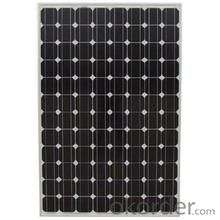
Application
Industrial
Commercial
Residential
Feature
Residential, grid-connected rooftop systems which have a capacity more than 10 kilowatts can meet the load of most consumers.[2] They can feed excess power to the grid where it is consumed by other users. The feedback is done through a meter to monitor power transferred. Photovoltaic wattage may be less than average consumption, in which case the consumer will continue to purchase grid energy, but a lesser amount than previously. If photovoltaic wattage substantially exceeds average consumption, the energy produced by the panels will be much in excess of the demand. In this case, the excess power can yield revenue by selling it to the grid. Depending on their agreement with their local grid energy company, the consumer only needs to pay the cost of electricity consumed less the value of electricity generated. This will be a negative number if more electricity is generated than consumed.[3] Additionally, in some cases, cash incentives are paid from the grid operator to the consumer.
Packaging
With carton and box
- Q: How do solar energy systems impact the reliability of the electricity grid?
- Solar energy systems can have both positive and negative impacts on the reliability of the electricity grid. On one hand, solar energy systems can enhance grid reliability by diversifying the energy sources and reducing reliance on traditional fossil fuel-based generation. This can help to mitigate the risk of disruptions caused by fuel supply shortages or price fluctuations. Additionally, solar energy systems can often be installed at or near the point of energy consumption, reducing transmission and distribution losses and improving overall system efficiency. On the other hand, solar energy systems also present challenges to grid reliability. As solar power generation is intermittent and dependent on weather conditions, grid operators need to manage fluctuations in solar output to ensure a stable electricity supply. This requires the integration of smart grid technologies, energy storage systems, and advanced forecasting methods to balance supply and demand. Failure to effectively manage these challenges can result in voltage fluctuations, grid instability, and potential grid failures. Overall, with proper planning, grid integration, and technological advancements, solar energy systems can positively contribute to the reliability of the electricity grid. However, careful management and investment in grid infrastructure and energy storage solutions are essential to address the intermittency issues associated with solar power generation.
- Q: Are there any tax credits available for installing solar energy systems?
- Yes, there are tax credits available for installing solar energy systems. The federal government offers the Investment Tax Credit (ITC), which provides a credit of 26% of the total cost of the solar system installed. Some states also offer their own tax credits, incentives, or grants for solar installations. It is advisable to consult a tax professional or contact local authorities to determine the specific credits available in your area.
- Q: What is the lifespan of solar batteries used in solar energy systems?
- The lifespan of solar batteries used in solar energy systems typically ranges from 5 to 15 years, depending on the quality of the battery and how well it is maintained.
- Q: Can solar energy systems be used for powering electric vehicle sharing programs?
- Yes, solar energy systems can be used to power electric vehicle sharing programs. Solar energy is a renewable and sustainable source of power, making it an ideal solution for reducing carbon emissions and promoting clean transportation. By installing solar panels and utilizing the energy they produce, electric vehicle sharing programs can operate on clean and green energy. This eliminates the reliance on fossil fuels and reduces the overall environmental impact of the program. Additionally, solar energy systems can provide a reliable and cost-effective source of power for charging electric vehicles, making it an efficient and practical solution for powering these programs.
- Q: Are there any health benefits associated with using solar energy?
- Yes, there are numerous health benefits associated with using solar energy. Solar power is a clean and renewable source of energy that reduces reliance on fossil fuels, thus reducing air pollution and greenhouse gas emissions. This improves air quality and lowers the risk of respiratory and cardiovascular diseases. Additionally, solar energy systems do not produce harmful emissions or noise pollution, contributing to a healthier and quieter environment.
- Q: How do solar energy systems impact the structural integrity of a building?
- Solar energy systems have a minimal impact on the structural integrity of a building. In fact, they are designed to be installed on rooftops or as standalone structures without compromising the structure's stability. The weight of solar panels is relatively light, and modern technologies have made them even lighter than before. The panels are typically mounted on racks or frames that distribute the weight evenly across the surface area. Additionally, roof-mounted solar panels are usually installed with the help of professional engineers who ensure that the load is properly distributed and does not exceed the roof's weight-bearing capacity. Moreover, solar panels act as a protective layer for the roof by shielding it from direct sunlight, rain, and other weather elements. This can actually extend the lifespan of the roof by preventing UV damage and reducing the thermal stress caused by extreme temperatures. In some cases, additional reinforcement may be required, especially for installations on older buildings or in areas prone to seismic activity or heavy snow loads. However, these considerations are part of the installation process and are taken into account by experienced professionals. Overall, solar energy systems have a negligible impact on the structural integrity of a building and can even provide added protection to the roof. They are designed to be safe, reliable, and durable, ensuring the long-term stability and sustainability of the building.
- Q: How long do solar energy systems typically last?
- Solar energy systems typically last for about 25 to 30 years.
- Q: Can a solar energy system be installed on a sloped roof?
- Yes, a solar energy system can be installed on a sloped roof. In fact, many solar installations are done on sloped roofs as long as the angle of the roof is within an acceptable range for optimal solar production. The panels can be mounted on racks or brackets that are specifically designed to be installed on sloped surfaces, allowing for efficient utilization of solar energy.
- Q: Can solar energy systems be used in powering airports or transportation hubs?
- Solar energy systems have the capability to power airports and transportation hubs. By installing solar panels, we can harness renewable and sustainable energy from the sun. These panels can be positioned on airport buildings' roofs, parking lots, or the surrounding ground. The utilization of solar energy in airports and transportation hubs is multifaceted. It can generate electricity to power lighting systems, security cameras, and other electrical equipment within the airport premises. Solar power can also be used to charge electric vehicles like electric buses or airport shuttles. This promotes a cleaner transportation system and reduces carbon emissions. In addition, solar energy systems serve as a reliable backup power source during emergencies or power outages. This is particularly crucial for airports, as continuous operations and safety measures must be maintained. Recently, various airports worldwide have adopted solar energy to decrease their carbon footprint and operating expenses. For example, Cochin International Airport in India achieved the distinction of being the world's first completely solar-powered airport in 2015. It generates surplus electricity that can be returned to the grid. Overall, integrating solar energy systems into airports and transportation hubs is both environmentally friendly and economically advantageous in the long term. It diminishes reliance on fossil fuels, reduces energy costs, and contributes to a more sustainable and greener transportation infrastructure.
- Q: Can solar energy systems be used in powering greenhouses or nurseries?
- Certainly, greenhouses or nurseries can make use of solar energy systems. Solar energy, a source of power that is both renewable and sustainable, can be harnessed by employing solar panels. These panels convert sunlight into electricity, which can then be utilized to power various devices and systems within a greenhouse or nursery. Using solar energy in these environments presents several advantages. Primarily, it helps decrease dependence on non-renewable energy sources like fossil fuels that contribute to greenhouse gas emissions and climate change. By employing solar power, owners of greenhouses and nurseries can significantly lessen their carbon footprint and contribute to a cleaner and more environmentally friendly world. Solar energy systems are also economically efficient in the long term. While the initial installation costs may be higher compared to traditional energy sources, solar panels have a lengthy lifespan and require minimal maintenance. Once installed, they can generate electricity for decades, providing a dependable and consistent power source for the greenhouse or nursery. This can result in substantial energy savings over time, helping to offset the initial investment. Moreover, solar energy systems can be tailored to meet the specific energy demands of greenhouses and nurseries. These facilities often require a steady and trustworthy source of electricity for various functions, such as lighting, heating, ventilation, and irrigation systems. Solar panels can be positioned in a manner that maximizes energy production and ensures a continuous supply of power throughout the day, even during periods of low sunlight. In addition to powering the facility, solar energy systems can also store excess electricity in batteries. This stored energy can be utilized during overcast days or at night when sunlight is not available, ensuring an uninterrupted power supply to the greenhouse or nursery. All in all, solar energy systems offer a feasible and sustainable solution for powering greenhouses and nurseries. They provide environmental benefits, cost savings, and a reliable source of electricity, making them an appealing choice for those in the agricultural industry.
Send your message to us
Skagit Solar Energy Systems - CNBM On Grid System 500W with Certificate UL TUV CE
- Loading Port:
- China main port
- Payment Terms:
- TT OR LC
- Min Order Qty:
- 100 watt
- Supply Capability:
- 1000 watt/month
OKorder Service Pledge
OKorder Financial Service
Similar products
Hot products
Hot Searches
Related keywords
